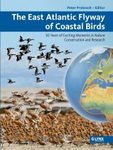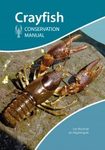![Species Richness Species Richness]()
Click to have a closer look
About this book
Contents
Customer reviews
Biography
Related titles
About this book
Patterns in the numbers of species have fascinated naturalists for centuries. Understanding the causes of latitudinal gradients in species richness and biodiversity 'hotspots' is often considered to be the holy grail of ecology. Extinctions in the past offer insight into what may occur in the future under climate change and habitat loss. The subject of vegetation-climate interaction is a compelling issue scientifically and is also of importance for land management practices.
This book examines the state of current understanding of species richness patterns and their explanations. As well as the present day world it deals with diversification and extinction, in the conservation of species richness, and the difficulties of assessing how many species remain to be discovered.
Written in an accessible style, the author offers an up-to-date, rigorous and yet eminently comprehensible overview of the ecology and biogeography of species richness. He departs from the often heavy approach of earlier texts, without sacrificing rigor and depth of information and analysis.
Contents
Preface: Why the book was written, aims of the book, acknowledgements; 1. Latitudinal gradients; -2. The depth of time;-3. Hotspots in species richness;- 4. Local scale patterns in species richness;- 5. Knowing what is out there;- 6: Humans and extinctions in history and prehistory;-7. Present threats - habitat change and global change;- 8. Conserving what we have.
Customer Reviews
Biography
Jonathan Adams is Assistant Professor in Ecology, Rutgers University, New Jersey, and is currently working on testing aspects of the Janzen-Connell hypothesis for forest diversity. He has published about 50 papers on many different aspects of ecology, including species richness, and the recently published Vegetation-Climate Interactions for Praxis.
By: Jonathan Adams
380 pages, Col & b/w figs, tabs
From the reviews: "This book is about patterns in species numbers across space and time. ! reading this book can also be a joy, simply because of its simplicity. ! The references ! are mostly well chosen. ! Overall, 'Species Richness' can be recommended to readers that are non-ecologists or otherwise new to the subject." (Christoph Scherber, Basic and Applied Ecology, Vol. 11, 2010) "For scientists like Adams (Rutgers), understanding the rules that govern how species are arranged and interact becomes a life's work. In this volume, he deftly synthesizes the state of knowledge that has grown dramatically over the last 80 years thanks to the work of hundreds of ecologists. ! This is an exceptionally readable, engagingly written overview ! of the most integral questions in ecology and biology today. Summing Up: Highly recommended. Upper-division undergraduates and above, general readers." (D. Flaspohler, Choice, Vol. 47 (5), January, 2010) "Adams begins his book with a brief introduction of his aims. ! Adams has organized his book around major themes in research on diversity. ! Adams book is a good one easy to read, well balanced and interesting. I would use it in my class ! . May this book help to educate another generation of students to think of a diversity of species as a kind of richness." (Robert R. Dunn, Ecology, Vol. 91 (6), 2010)














































